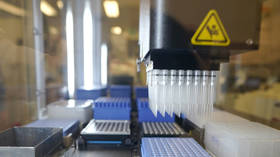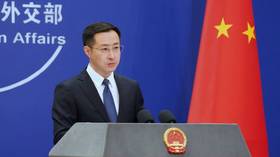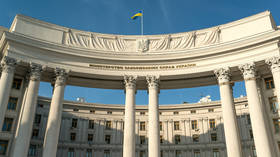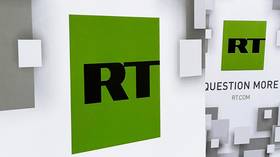Is North Korea making another weapon altogether?
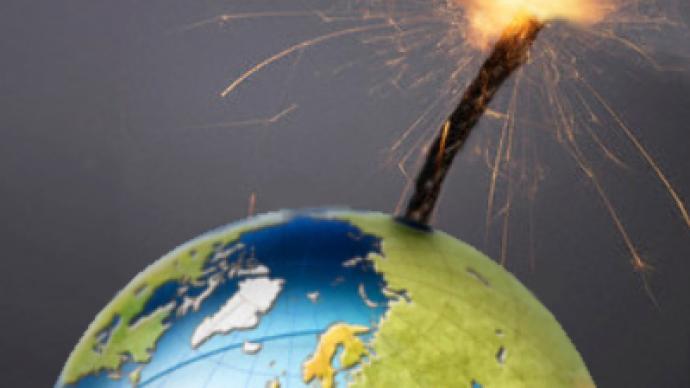
North Korea appears to be determined to trouble the water these days, but are those just circles on the surface it is creating, or will we soon find ourselves in the deep end?
While the rebellious state has yet to prove its missiles can reach its main adversary – the United States – the rocket-powered culprits might already be claiming their first victims, and it’s not just political egos.
Choose your poison
Ecologists are not yet crying wolf, but they are close. It all comes down to what propels the Korean weapons. There are fears it might be of the most damaging kind – the highly toxic fuel known as heptyl.
“If those missiles are indeed fueled with heptyl – one of the most dangerous substances ever created by human beings – and it doesn’t burn out completely and comes down into the sea with one of the missile stages – it can have very serious ecological consequences,” says Vladimir Chuprov from Greenpeace.
“I remember when second stages of missiles from Plesetsk cosmodrome fell down in Russia’s Republic of Komi – back when they used heptyl – the once virginally clean area was ruined,” he adds.
As it usually is with Mother Nature, our dirty deeds come back to haunt us:
“The fish popular with the local population are still carrying traces of toxic fuel. If the water in the Sea of Japan is regularly poisoned with heptyl, it will affect its inhabitants and eventually end up in people’s stomachs.”
Does it really matter which type of missile fuel North Korea is using to cause not only political but also ecological disaster? Well, some critics say not so much so.
“Actually, every kind of fuel used in missiles is dangerous for the environment. When such missile tests were carried out by other countries in the past, probes always showed that the level of pollution was very high,” points out Vladimir Slivyak from Eco Defence.
Earthquaking the enemies
However, missiles are probably the least of concerns at the moment. North Korea’s recent nuclear test has given the world a good shake-up, and not only in a figurative sense. The nuclear test in May caused an earthquake that measured approximately 4.5 on the Richter scale.
“So can you imagine what kind of a quake can be triggered by a bigger blast if the timing is ‘right’ and there is already tension in the earth shell? Can you imagine what it will be like if North Korea manages to acquire the technology to enrich uranium (from Iran for example) and create a megaton bomb? How will the earth’s shell react? How will the sea react?” asks Vladimir Evseev from the Centre for International Security from The Institute of World Economy and International Relations.
So should we be worried about North Korea creating nuclear weapons or tectonic ones? It’s not like the idea is new… Skeptics might point their fingers toward science fiction books, but the UN is likely to disagree.
In 1976 The General Assembly of the United Nations adopted the so-called “Weather Weapons Treaty” which defines a common approach to the use of environmental modification techniques for hostile purposes. The original proposal came from the Soviet Union. It took two years of joint work with the United States to produce a document aimed at curbing the possibility of “climate wars”.
The accuracy of geophysical weapons might not be impressive but the coverage area is another matter altogether.
Crash, boom, bang
Whatever North Korea’s game is, observers have agreed on one thing – technologically the state seems to be making progress. While the yield of the May nuke test is still being debated, they consent that it was larger than the one in 2006. That, however, isn’t the only difference from their previous experiment.
“This time around they managed to reduce the spreading of the material fallout,” says Evseev.
This is exactly what has made analysts wonder whether it was a nuclear test at all.
“This time the emission of isotopes was far less than in 2006. It might mean two things. Firstly the nuclear device could be technologically more advanced. Or North Korea may have learnt how to hide its activity better, and make it harder for others to determine what kind of an atomic weapon it was and its exact yield,” explains non-proliferation researcher and graduate of the Moscow Engineering Physics Institute Anton Khlopkov.
The “little” mystery is what is causing the most worry according to Evseev: “We don’t know if the weapon was stationary or portable. Because if it is portable, it can be carried on a missile. And then we’ve got a real problem. North Korea has enough military plutonium to create several nuclear missiles.”
A nuclear attack from the rebellious state is still just a possibility, but the threat of ecological disaster looks real enough.
“North Korea does not have the capabilities to imitate nuclear tests using computer simulations. And it’s not likely that it’ll acquire such technology in the next dozen years or so,” notes Anton Khlopkov.
It won’t be the United States who would feel the immediate consequences – it’s the neighbors of the East Asian country who will end up getting burnt by nuclear ambitions and power games.
Julia Davydova, RT


